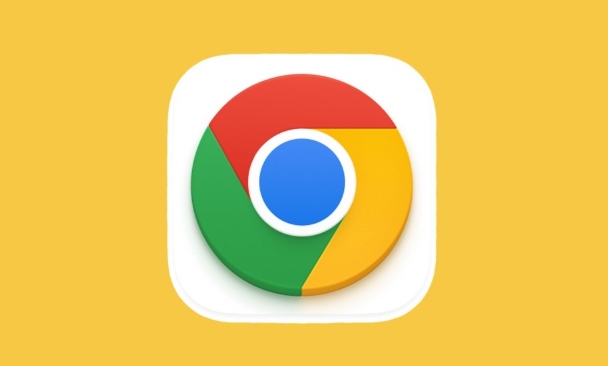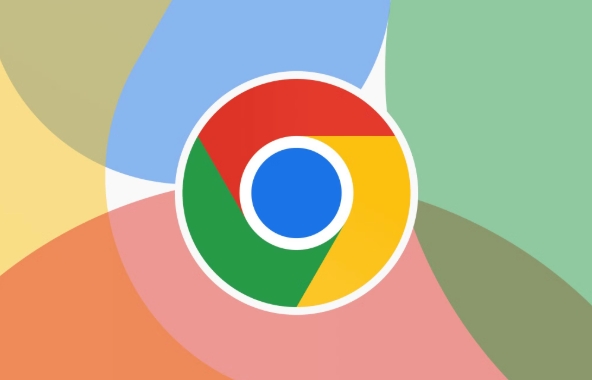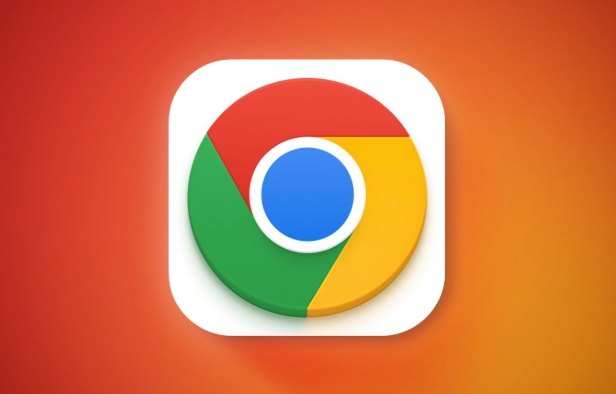Turning off hardware acceleration can reduce GPU usage. Path: Settings → Advanced → System → Disable hardware acceleration; Close unnecessary extensions and tab pages, manage and reduce video and social media pages through chrome://extensions/; install frozen tag plug-ins such as OneTab to limit background activities; regularly update the browser and graphics card driver to improve compatibility.

Chrome is indeed quite common to eat GPU resources, especially when opening multiple web pages or videos, the fan is spinning wildly and stuttering. There are actually not many solutions, and it is not difficult to find those "large energy-consuming players" and provide reasonable restrictions.

Disable hardware acceleration (if not required)
Many people don’t know that Chrome has enabled hardware acceleration by default. Although it is intended to make the page smoother, it sometimes increases the burden on the GPU, especially when old devices or graphics card drivers are not very new.
You can close it like this:

- Open Settings → Advanced → System
- Turn off "Use Hardware Acceleration Mode (if available)"
- Restart the browser
Some animations may not be as smooth as they are closed, but are effective for reducing GPU usage. If you don't often watch high-definition videos or play WebGL games, the impact is basically not great.
Close unnecessary extensions and tabs
Extensions are invisible resource consumers, especially ad blocking or video enhancement plug-ins. They will continue to run in the background and secretly occupy GPU resources.

suggestion:
- Regularly check which extensions are running, deactivate or uninstall unused
- Use
chrome://extensions/management interface to view - Try to open tabs as few as possible, especially "heavy pages" such as video websites and social media
In addition, you can consider using plug-ins like The Great Suspender to hang tabs that have not been used for a long time to reduce background pressure.
Restrict backend tab activity
Chrome allows background tabs to continue running scripts, playing audio, etc. by default, which will cause the pages you don't see to silently occupy resources.
It can be optimized by:
- Install the "Frozen Tab" plugin, such as OneTab or Auto Tab Discard
- Set automatic sleep time, such as pausing the run after more than 5 minutes of leaving the page
This method is particularly useful for multitasking users, which can retain page status without dragging down system performance all the time.
Update your browser and graphics drivers
Don't underestimate the effect of updates. Chrome often fixes performance issues and resource management bugs, and graphics card driver updates can also improve browser compatibility.
suggestion:
- Check if Chrome is updated once a week
- Download the latest drivers at the graphics card official website (NVIDIA/AMD/Intel)
- Sometimes the drivers that come with Win10 are not new enough
Sometimes after updates, you will find that the GPU usage has dropped significantly, and the browser has become more stable.
Basically, these methods are not complicated but are also easy to ignore. Depending on your computer configuration and usage habits, you can tell the effect by choosing a few.
The above is the detailed content of How to make Chrome use less GPU. For more information, please follow other related articles on the PHP Chinese website!

Hot AI Tools

Undress AI Tool
Undress images for free

Undresser.AI Undress
AI-powered app for creating realistic nude photos

AI Clothes Remover
Online AI tool for removing clothes from photos.

Clothoff.io
AI clothes remover

Video Face Swap
Swap faces in any video effortlessly with our completely free AI face swap tool!

Hot Article

Hot Tools

Notepad++7.3.1
Easy-to-use and free code editor

SublimeText3 Chinese version
Chinese version, very easy to use

Zend Studio 13.0.1
Powerful PHP integrated development environment

Dreamweaver CS6
Visual web development tools

SublimeText3 Mac version
God-level code editing software (SublimeText3)

Hot Topics
 What is Updater.exe in Windows 11/10? Is this the Chrome process?
Mar 21, 2024 pm 05:36 PM
What is Updater.exe in Windows 11/10? Is this the Chrome process?
Mar 21, 2024 pm 05:36 PM
Every application you run on Windows has a component program to update it. So if you are using Google Chrome or Google Earth, it will run a GoogleUpdate.exe application, check if an update is available, and then update it based on the settings. However, if you no longer see it and instead see a process updater.exe in the Task Manager of Windows 11/10, there is a reason for this. What is Updater.exe in Windows 11/10? Google has rolled out updates for all its apps like Google Earth, Google Drive, Chrome, etc. This update brings
 How to turn off win10gpu shared memory
Jan 12, 2024 am 09:45 AM
How to turn off win10gpu shared memory
Jan 12, 2024 am 09:45 AM
Friends who know something about computers must know that GPUs have shared memory, and many friends are worried that shared memory will reduce the number of memory and affect the computer, so they want to turn it off. Here is how to turn it off. Let's see. Turn off win10gpu shared memory: Note: The shared memory of the GPU cannot be turned off, but its value can be set to the minimum value. 1. Press DEL to enter the BIOS when booting. Some motherboards need to press F2/F9/F12 to enter. There are many tabs at the top of the BIOS interface, including "Main, Advanced" and other settings. Find the "Chipset" option. Find the SouthBridge setting option in the interface below and click Enter to enter.
 What to do if chrome cannot load plugins
Nov 06, 2023 pm 02:22 PM
What to do if chrome cannot load plugins
Nov 06, 2023 pm 02:22 PM
Chrome's inability to load plug-ins can be solved by checking whether the plug-in is installed correctly, disabling and enabling the plug-in, clearing the plug-in cache, updating the browser and plug-ins, checking the network connection, and trying to load the plug-in in incognito mode. The solution is as follows: 1. Check whether the plug-in has been installed correctly and reinstall it; 2. Disable and enable the plug-in, click the Disable button, and then click the Enable button again; 3. Clear the plug-in cache, select Advanced Options > Clear Browsing Data, check cache images and files and clear all cookies, click Clear Data.
 Do I need to enable GPU hardware acceleration?
Feb 26, 2024 pm 08:45 PM
Do I need to enable GPU hardware acceleration?
Feb 26, 2024 pm 08:45 PM
Is it necessary to enable hardware accelerated GPU? With the continuous development and advancement of technology, GPU (Graphics Processing Unit), as the core component of computer graphics processing, plays a vital role. However, some users may have questions about whether hardware acceleration needs to be turned on. This article will discuss the necessity of hardware acceleration for GPU and the impact of turning on hardware acceleration on computer performance and user experience. First, we need to understand how hardware-accelerated GPUs work. GPU is a specialized
 News says AMD will launch new RX 7700M / 7800M laptop GPU
Jan 06, 2024 pm 11:30 PM
News says AMD will launch new RX 7700M / 7800M laptop GPU
Jan 06, 2024 pm 11:30 PM
According to news from this site on January 2, according to TechPowerUp, AMD will soon launch notebook graphics cards based on Navi32 GPU. The specific models may be RX7700M and RX7800M. Currently, AMD has launched a variety of RX7000 series notebook GPUs, including the high-end RX7900M (72CU) and the mainstream RX7600M/7600MXT (28/32CU) series and RX7600S/7700S (28/32CU) series. Navi32GPU has 60CU. AMD may make it into RX7700M and RX7800M, or it may make a low-power RX7900S model. AMD is expected to
 Beelink EX graphics card expansion dock promises zero GPU performance loss
Aug 11, 2024 pm 09:55 PM
Beelink EX graphics card expansion dock promises zero GPU performance loss
Aug 11, 2024 pm 09:55 PM
One of the standout features of the recently launched Beelink GTi 14is that the mini PC has a hidden PCIe x8 slot underneath. At launch, the company said that this would make it easier to connect an external graphics card to the system. Beelink has n
 AMD FSR 3.1 launched: frame generation feature also works on Nvidia GeForce RTX and Intel Arc GPUs
Jun 29, 2024 am 06:57 AM
AMD FSR 3.1 launched: frame generation feature also works on Nvidia GeForce RTX and Intel Arc GPUs
Jun 29, 2024 am 06:57 AM
AMD delivers on its initial March ‘24 promise to launch FSR 3.1 in Q2 this year. What really sets the 3.1 release apart is the decoupling of the frame generation side from the upscaling one. This allows Nvidia and Intel GPU owners to apply the FSR 3.
 What is the Chrome plug-in extension installation directory?
Mar 08, 2024 am 08:55 AM
What is the Chrome plug-in extension installation directory?
Mar 08, 2024 am 08:55 AM
What is the Chrome plug-in extension installation directory? Under normal circumstances, the default installation directory of Chrome plug-in extensions is as follows: 1. The default installation directory location of chrome plug-ins in windowsxp: C:\DocumentsandSettings\username\LocalSettings\ApplicationData\Google\Chrome\UserData\Default\Extensions2. chrome in windows7 The default installation directory location of the plug-in: C:\Users\username\AppData\Local\Google\Chrome\User






